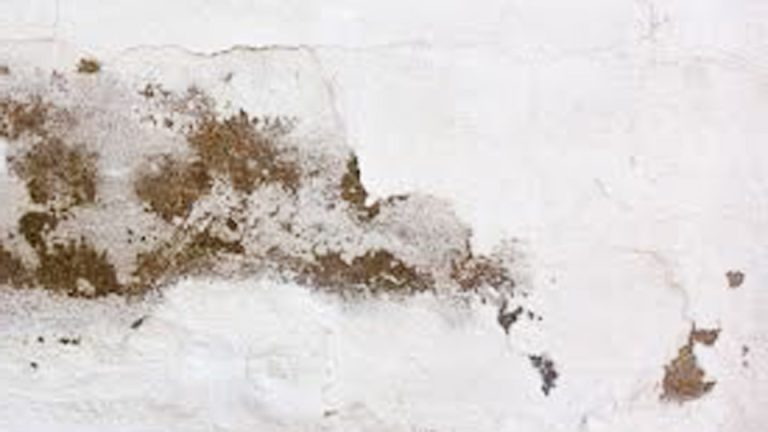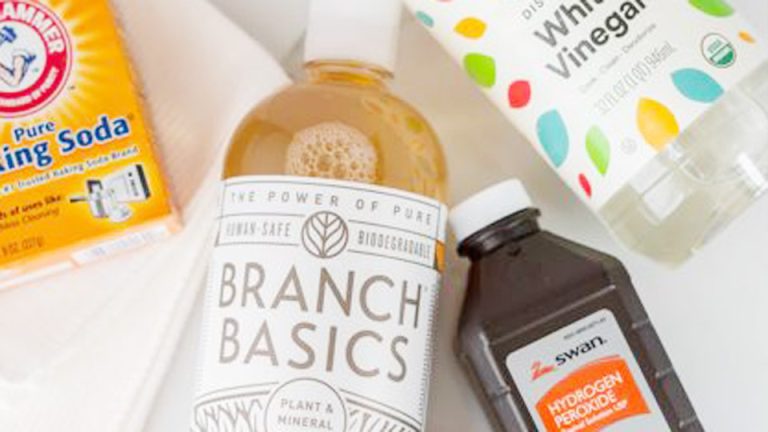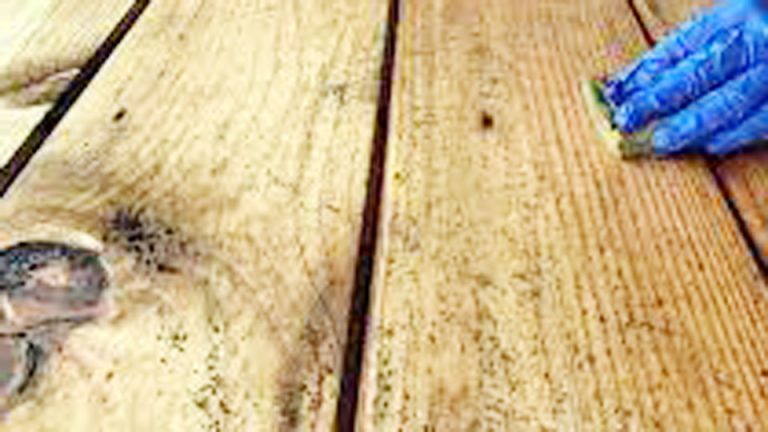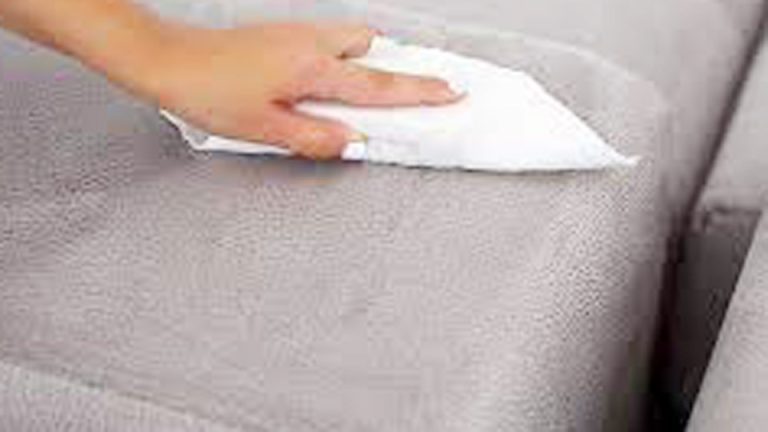I used to think all cleaners were created equal—until the day I grabbed my kitchen spray to tackle the bathroom sink. At first, it seemed fine… until I noticed it wasn’t cutting through the soap scum or hard water stains like I expected. That’s when I realized: kitchen and bathroom cleaners might look similar, but they’re built for totally different battles.
After years of cleaning my home top to bottom, I’ve learned there’s a real science behind these products. Kitchen cleaners are made to break down grease, food residue, and cooking oils, while bathroom cleaners are designed to tackle mold, mildew, mineral buildup, and soap scum. Using the wrong one might not only waste your time—it can actually leave surfaces dirtier than before.
I’ll break down the key differences between kitchen and bathroom cleaners, based on my own hands-on experience. Whether you’re deep-cleaning your counters or scrubbing down the tub, knowing which product to use where can make your cleaning routine faster, easier, and way more effective.
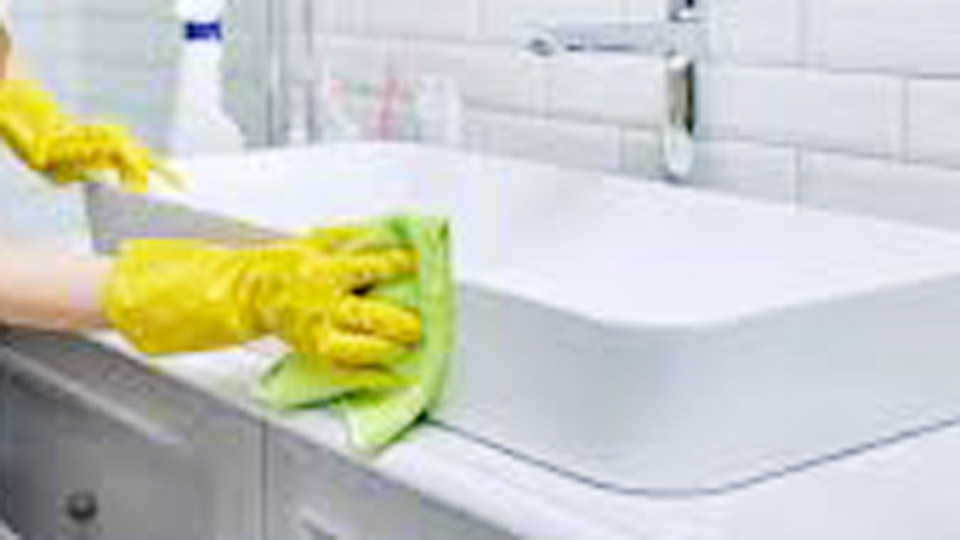
Image by mastermaid
Why Different Cleaners for Different Rooms?
When I first started cleaning, I assumed an all-purpose cleaner could handle everything. Why spend extra on specialized products? But after a few mishaps—like using a bathroom cleaner on my kitchen counter and ending up with a greasy residue—I realized that not all cleaners are created equal.
Kitchens and bathrooms have unique surfaces, messes, and hygiene needs, and their cleaners are formulated to tackle those differences.
Kitchen cleaners are designed to cut through grease, food splatter, and sticky residues, while bathroom cleaners focus on soap scum, hard water stains, and germ-heavy areas like toilets. Using the wrong cleaner can leave surfaces streaky, damage materials, or just make your cleaning job harder. Understanding these differences saves time, money, and frustration, and it ensures your home is both clean and safe.
Breaking Down Kitchen Cleaners
Let’s start with the kitchen. If you’ve ever cooked bacon or fried chicken, you know grease is the kitchen’s biggest enemy. It coats counters, stovetops, and even cabinets, making everything feel sticky. Kitchen cleaners are formulated to tackle these oily, food-based messes. They often contain degreasers—ingredients that break down fats and oils—so you can wipe away grease without scrubbing for hours.
I remember cleaning my mom’s kitchen after a big family dinner. The stovetop was a mess from spaghetti sauce and oil splatter. I grabbed a kitchen cleaner with a citrus-based formula, sprayed it on, and let it sit for a minute.
With one swipe of a microfiber cloth, the grease was gone, and the surface was spotless. That’s the power of a good kitchen cleaner—it cuts through the mess so you don’t have to.
Kitchen cleaners are also designed to be safe for surfaces where food is prepared, like countertops and cutting boards. Many are formulated to avoid leaving harmful residues, which is crucial since you’re chopping veggies or kneading dough on those surfaces. Some even have antibacterial properties to tackle germs from raw meat or spilled milk, but their main focus is grease and grime.
Here’s what you’ll typically find in a kitchen cleaner:
| Ingredient/Type | Purpose |
|---|---|
| Degreasers | Break down grease and oil from cooking splatter. |
| Surfactants | Lift dirt and food particles for easy wiping. |
| Antibacterial agents | Kill germs from raw meat, dairy, or other food spills. |
| Citrus or mild scents | Leave a fresh, food-safe fragrance without overpowering. |
Pro tip: Always check if your kitchen cleaner is safe for specific surfaces like granite or stainless steel. I once used a generic cleaner on a client’s marble countertop, and it left a dull spot that took forever to buff out. Lesson learned—read the label!
Understanding Bathroom Cleaners
Now, let’s talk about bathroom cleaners. Bathrooms are a different beast. Instead of grease, you’re dealing with soap scum, hard water stains, and, let’s be honest, some pretty germy areas like the toilet and shower. Bathroom cleaners are formulated to tackle these challenges, often with stronger disinfectants and ingredients that dissolve mineral deposits.
I’ll never forget the time I moved into a new apartment with a bathroom that hadn’t been cleaned in ages. The shower tiles were coated in soap scum, and the sink had hard water stains that looked permanent.
I grabbed a bathroom cleaner with a foaming formula, sprayed it on, and let it sit for 10 minutes. When I came back, the scum wiped away with barely any scrubbing, and the stains were history. That’s what a bathroom cleaner is built for—tough, water-based messes and germs.
Bathroom cleaners often have stronger disinfecting properties than kitchen cleaners because bathrooms are breeding grounds for bacteria and mold. Toilets, sinks, and showers are high-touch areas, so these cleaners prioritize killing germs and preventing mildew.
They also contain acids or chelating agents to break down limescale and soap scum, which are common in humid, water-heavy environments.
Here’s a quick look at what’s in most bathroom cleaners:
| Ingredient/Type | Purpose |
|---|---|
| Disinfectants | Kill bacteria, viruses, and mold in high-germ areas like toilets. |
| Acids (e.g., citric acid) | Dissolve soap scum, limescale, and hard water stains. |
| Surfactants | Lift dirt and grime for easier cleaning. |
| Fresh or strong scents | Combat bathroom odors and leave a clean smell. |
A word of caution: Bathroom cleaners can be harsher than kitchen cleaners, so always wear gloves and ventilate the room. I learned this the hard way when I cleaned a shower without gloves and ended up with irritated skin for days.
Differences Between Kitchen and Bathroom Cleaners
So, what’s the difference between kitchen and bathroom cleaner? It comes down to their purpose, ingredients, and the surfaces they’re designed for. Here’s a side-by-side comparison to make it crystal clear:
| Feature | Kitchen Cleaner | Bathroom Cleaner |
|---|---|---|
| Primary Focus | Grease, oil, and food splatter | Soap scum, hard water stains, and germs |
| Key Ingredients | Degreasers, mild surfactants | Disinfectants, acids, chelating agents |
| Surfaces | Countertops, stovetops, appliances | Toilets, showers, tiles, sinks |
| Disinfecting Power | Moderate, focuses on food-related germs | Strong, targets bathroom bacteria and mold |
| Scent | Citrus, neutral, or food-safe scents | Stronger, often mint or chemical-based scents |
| Safety Considerations | Food-safe, residue-free | May leave residues, not ideal for food prep |
The biggest takeaway? Kitchen cleaners are gentler and food-safe, while bathroom cleaners are tougher on germs and mineral deposits. Using a bathroom cleaner in the kitchen might leave a residue that’s not safe for food prep, and a kitchen cleaner in the bathroom might not tackle soap scum or disinfect effectively.
Can You Use Them Interchangeably?
I get this question a lot: “Can I just use one cleaner for both rooms?” In a pinch, sure, but it’s not ideal. I tried this once when I ran out of bathroom cleaner and used a kitchen spray on the shower. It didn’t touch the soap scum, and I ended up scrubbing twice as hard.
On the flip side, using a bathroom cleaner on kitchen counters can leave a chemical residue that’s not safe for food prep. I made that mistake early on and noticed a weird film on my cutting board—not a great feeling!
If you want a one-size-fits-all option, an all-purpose cleaner can work for both rooms, but check the label to ensure it’s safe for food surfaces and effective on bathroom grime. I keep an all-purpose cleaner in my caddy for quick touch-ups, but for deep cleaning, I stick to specialized products. They’re designed to make your life easier, and trust me, they do.
Choosing the Right Cleaner for Your Home
Picking the right cleaner depends on your needs, surfaces, and preferences. Here’s how I decide:
For the Kitchen: Look for a cleaner labeled “food-safe” or “degreaser.” If you have stainless steel appliances, choose one that’s streak-free. I love citrus-based cleaners because they smell fresh and cut grease like nobody’s business. If you’re eco-conscious, go for a plant-based formula—many work just as well as chemical ones.
For the Bathroom: Choose a cleaner with disinfecting power and limescale-fighting ingredients. Foaming sprays are my go-to for showers because they cling to surfaces and loosen grime.
If you have hard water, look for a cleaner with citric acid or vinegar. And if you’re sensitive to strong smells, opt for a fragrance-free or mild option.
For Both: If you’re short on space or budget, an all-purpose cleaner with disinfecting properties can cover both rooms. Just make sure it’s safe for all your surfaces and effective on both grease and soap scum.
Always test a new cleaner on a small, hidden area first. I learned this after using a new bathroom cleaner on a client’s fancy glass shower door, only to find it left a hazy film. A quick test patch would’ve saved me a lot of stress!
My Step-by-Step Cleaning Routine for Kitchen and Bathroom
To give you a clear picture of how these cleaners work in action, here’s how I use them in my cleaning routine. These steps are based on years of cleaning my own home and clients’ spaces, and they’re designed to be efficient and effective.
Kitchen Cleaning Routine
Clear the Space: Move dishes, appliances, and clutter off counters. I put everything in the sink or a temporary basket.
Wipe Down Surfaces: Spray a kitchen cleaner on countertops, stovetops, and appliances. Let it sit for a minute to break down grease, then wipe with a microfiber cloth.
Tackle Tough Spots: For sticky spots or dried food, I use a scrub sponge with a bit of cleaner and warm water. Gentle scrubbing usually does the trick.
Clean the Sink: Spray the sink with kitchen cleaner, scrub with a sponge, and rinse thoroughly. This keeps it food-safe and shiny.
Finish with Appliances: Use a streak-free cleaner on stainless steel or glass surfaces. I wipe in the direction of the grain to avoid streaks.
Bathroom Cleaning Routine
Clear the Space: Remove towels, toiletries, and trash. I keep a small basket for these items during cleaning.
Dust High Surfaces: Use a microfiber cloth to dust shelves, light fixtures, and vents. This prevents dust from falling onto cleaned areas.
Clean the Toilet: Squirt toilet bowl cleaner under the rim and let it sit. Wipe the outside with a bathroom cleaner and a cloth, then scrub the bowl with a brush.
Tackle the Shower and Sink: Spray bathroom cleaner on tiles, shower doors, and sinks. Let it sit for 5-10 minutes to loosen soap scum, then scrub and rinse.
Finish with the Floor: Sweep or vacuum, then mop with a bathroom cleaner diluted in water. Pay extra attention to corners and around the toilet.
Cleaning Hacks to Save Time and Effort
Over the years, I’ve picked up some tricks that make cleaning with kitchen and bathroom cleaners even easier. Here are my favorites:
Vinegar Boost for Bathrooms: If your bathroom cleaner isn’t cutting through hard water stains, add a splash of white vinegar to a spray bottle with water. Spray, let sit, and wipe—it’s a game-changer.
Baking Soda for Kitchen Grease: For extra-tough grease on stovetops, sprinkle baking soda on the surface, spray with kitchen cleaner, and scrub gently. It lifts grease without scratching.
Microfiber Magic: Use microfiber cloths for both rooms—they trap dirt and reduce streaks. I keep a stack in my caddy and wash them weekly.
Preventative Sprays: After cleaning, spray a daily shower spray in the bathroom to prevent soap scum buildup. In the kitchen, wipe down counters nightly to keep grease at bay.
Label Your Bottles: I label my spray bottles to avoid mixing up kitchen and bathroom cleaners. It’s a simple trick that prevents costly mistakes.
Preventative Tips to Keep Your Home Sparkling
Keeping your kitchen and bathroom clean isn’t just about deep cleaning—it’s about staying ahead of the mess. Here are some preventative tips I use to make cleaning easier:
Wipe Down Daily: Spend 2-3 minutes wiping kitchen counters and bathroom sinks each day. This prevents grease and soap scum from building up.
Use Mats and Liners: A washable kitchen mat catches spills, and a shower curtain liner prevents mold. Toss both in the wash regularly.
Ventilate Both Rooms: Run the kitchen range hood or bathroom fan during and after use to reduce grease and humidity. This keeps surfaces cleaner longer.
Organize Supplies: Keep a caddy stocked with kitchen and bathroom cleaners under each sink. It saves time and keeps you motivated to clean.
Empty Trash Often: Small trash cans in both rooms fill up fast. Empty them weekly to avoid odors and overflow.
You’ve Got This!
Cleaning your kitchen and bathroom doesn’t have to be a chore. By understanding the difference between kitchen and bathroom cleaners, you’re already one step ahead. Kitchen cleaners are your go-to for grease and food-safe surfaces, while bathroom cleaners tackle soap scum, germs, and hard water stains. With the right products, a solid routine, and a few of my favorite hacks, you’ll have both rooms sparkling in no time.
I know cleaning can feel overwhelming, especially after a long day, but trust me—once you get into a rhythm, it’s almost therapeutic. Put on some music, grab your caddy, and tackle one room at a time. You’re not just cleaning—you’re creating a healthier, happier home for yourself and your loved ones. So go for it, and enjoy that fresh, clean feeling!
FAQ
What’s the difference between kitchen and bathroom cleaner?
Kitchen cleaners are designed to cut through grease, oil, and food splatter, making them ideal for countertops, stovetops, and appliances. They’re formulated to be food-safe and often have mild, citrusy scents.
Bathroom cleaners, on the other hand, target soap scum, hard water stains, and germs in toilets, showers, and sinks. They contain stronger disinfectants and acids to dissolve limescale and combat mold, with scents that mask bathroom odors.
Can I use kitchen cleaner in the bathroom?
While you can use a kitchen cleaner in the bathroom for light cleaning, it’s not ideal. Kitchen cleaners aren’t formulated to tackle soap scum or hard water stains effectively, and they may not have the disinfecting power needed for germ-heavy areas like toilets. For best results, use a bathroom cleaner for deep cleaning and save kitchen cleaners for food-safe surfaces.
Can I use bathroom cleaner in the kitchen?
I wouldn’t recommend it. Bathroom cleaners often contain harsher chemicals or acids that can leave residues not safe for food prep surfaces like countertops or cutting boards. They’re also less effective at cutting through grease. Stick to a kitchen cleaner for food-related messes to ensure safety and a streak-free finish.
Are all-purpose cleaners a good alternative?
An all-purpose cleaner can work for both kitchen and bathroom if it’s labeled as safe for food surfaces and effective on soap scum and germs. However, for deep cleaning, specialized kitchen and bathroom cleaners are more effective. Always check the label to ensure it’s suitable for your surfaces, and test it on a small area first.
How do I know which cleaner is safe for my surfaces?
Check the cleaner’s label for specific instructions and surface compatibility. For example, avoid acidic bathroom cleaners on natural stone like marble, and use streak-free kitchen cleaners on stainless steel.
If you’re unsure, test the cleaner on a hidden spot first. I always keep a list of my home’s surfaces—granite counters, ceramic tiles—and double-check before trying a new product.

